1.15: Ángulos suplementarios
( \newcommand{\kernel}{\mathrm{null}\,}\)
Dos ángulos que suman 180 grados y cuando son adyacentes forman una línea recta.
Pares Lineales
Dos ángulos son adyacentes si tienen el mismo vértice, comparten un lado y no se superponen. ∠PSQy∠QSR son adyacentes.
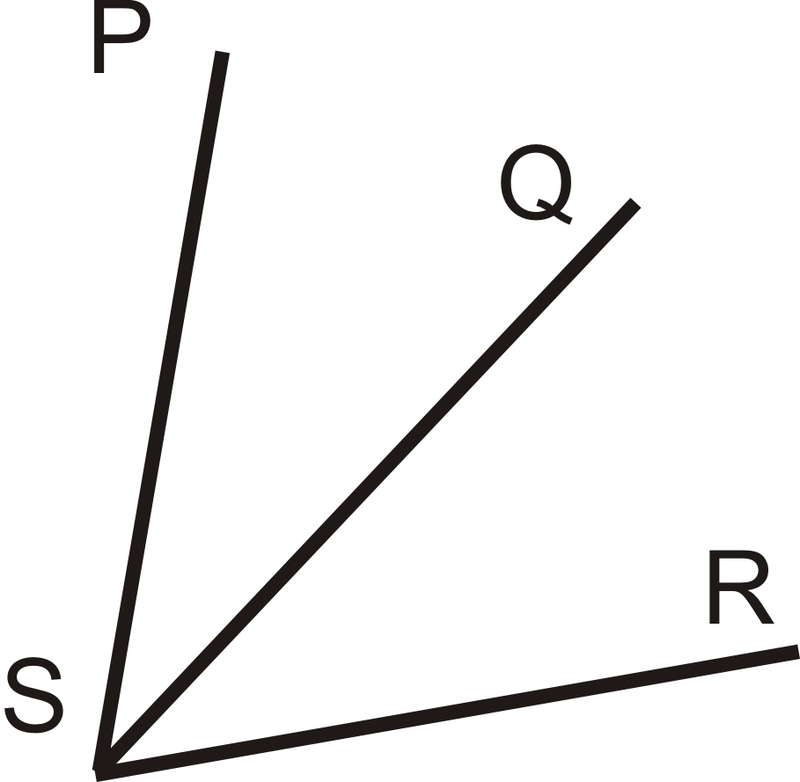 Figura1.15.1
Figura1.15.1Un par lineal es dos ángulos que son adyacentes y cuyos lados no comunes forman una línea recta. Si dos ángulos son un par lineal, entonces son complementarios (suman180∘). ∠PSQy∠QSR son un par lineal.
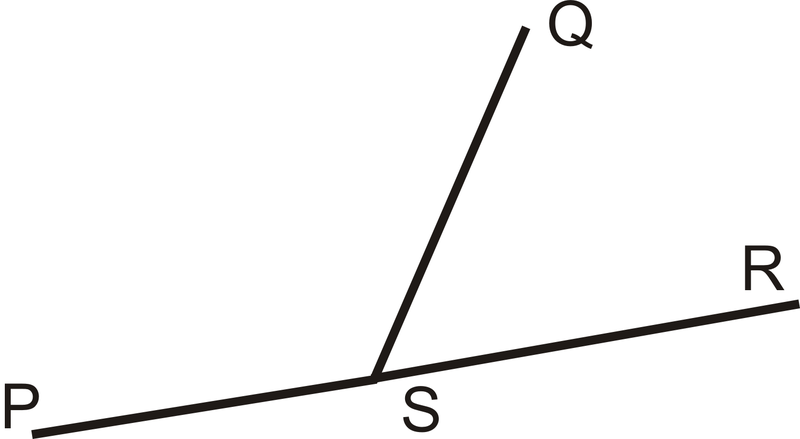 Figura1.15.2
Figura1.15.2¿Y si te dieran dos ángulos de tamaño desconocido y te dijeran que forman un par lineal? ¿Cómo determinarías sus medidas de ángulo?
Por ejemplo1.15.1 y1.15.2, usa el diagrama a continuación. Tenga en cuenta que¯NK⊥↔IL.
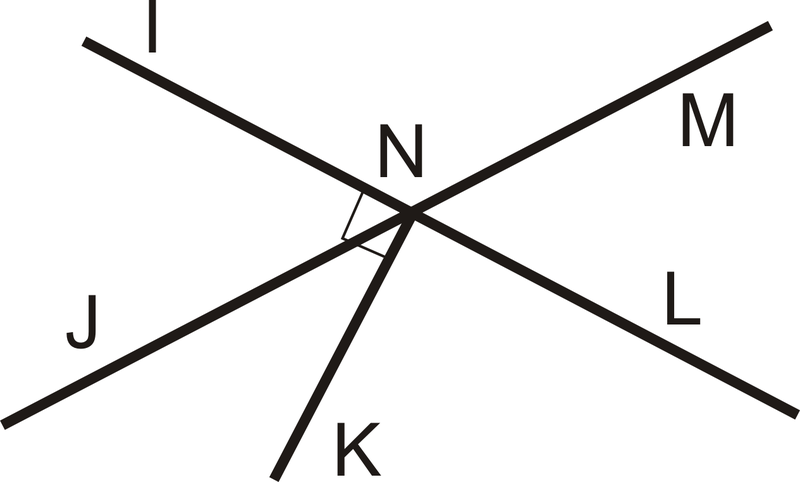 Figura1.15.3
Figura1.15.3Ejemplo1.15.1
Nombra un par lineal de ángulos.
Solución
∠MNLy∠LNJ
Ejemplo1.15.2
¿Qué esm∠INL?
Solución
180∘
Ejemplo1.15.3
¿Cuál es la medida de cada ángulo?
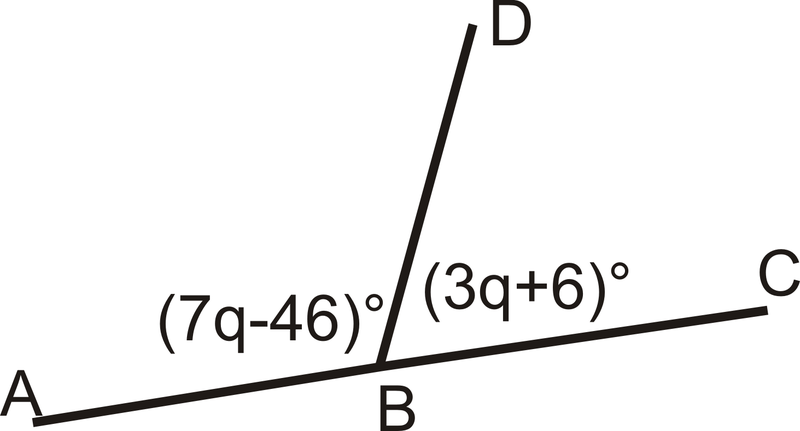 Figura1.15.4
Figura1.15.4Solución
Estos dos ángulos son un par lineal, por lo que suman180∘.
(7q−46)∘+(3q+6)∘=180∘
10q−40∘=220∘
10q=180∘
q=22∘
Enchufe q para obtener la medida de cada ángulo.
m∠ABD=7(22∘)−46∘=108∘
m∠DBC=180∘−108∘=72∘
Ejemplo1.15.4
¿Son∠CDA y∠DAB un par lineal? ¿Son complementarios?
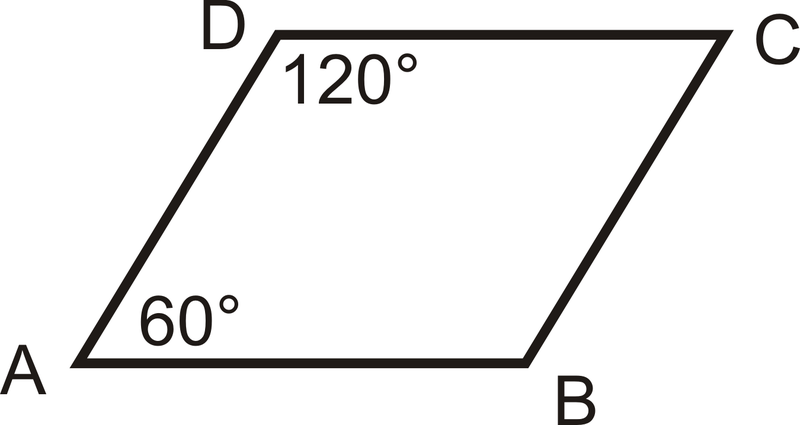 Figura1.15.5
Figura1.15.5Solución
Los dos ángulos no son un par lineal porque no tienen el mismo vértice. Son complementarios porque suman180∘:120∘+60∘=180∘.
Ejemplo1.15.5
Encuentra la medida de un ángulo que forma un par lineal con∠MRS sim∠MRS es150∘.
Solución
Debido a que los pares lineales tienen que sumar180∘, el otro ángulo debe ser180∘−150∘=30∘.
Revisar
Para 1-5, determinar si la declaración es verdadera o falsa.
- Los pares lineales son congruentes.
- Los ángulos adyacentes comparten un vértice.
- Los ángulos adyacentes se superponen.
- Los pares lineales son suplementarios.
- Los ángulos suplementarios forman pares lineales.
Para el ejercicio 6, encuentra el valor dex.
-
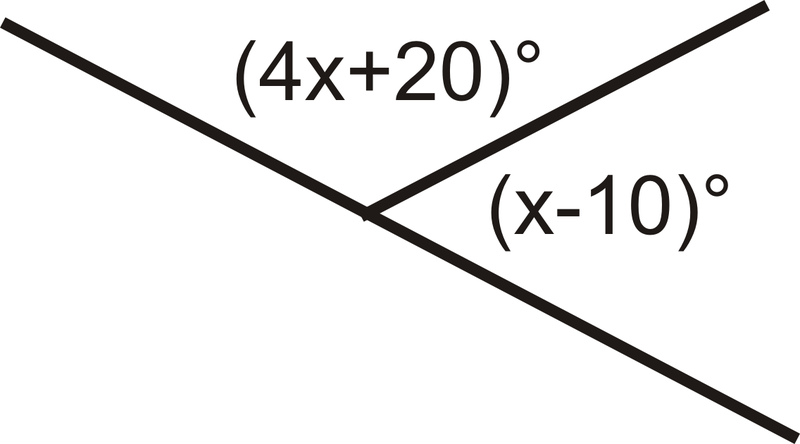 Figura1.15.6
Figura1.15.6
Encuentra la medida de un ángulo que forma un par lineal con∠MRS ifm∠MRS is:
- 61∘
- 23∘
- 114∘
- 7∘
- 179∘
- z∘
Reseña (Respuestas)
Para ver las respuestas de Revisar, abra este archivo PDF y busque la sección 1.9.
El vocabulario
| Término | Definición |
|---|---|
| Ángulos adyacentes | Dos ángulos son adyacentes si comparten un lado y un vértice. La palabra 'adyacente' significa 'al lado' o 'al lado de'. |
| par lineal | Dos ángulos forman un par lineal si son suplementarios y adyacentes. |
| Diagrama | Un diagrama es un dibujo utilizado para representar un problema matemático. |
Recursos adicionales
Elemento Interactivo
Video: Ángulos complementarios, suplementarios y verticales
Actividades: Preguntas de discusión sobre ángulos suplementarios
Ayudas de estudio: Guía de estudio de ángulos
Práctica: Ángulos suplementarios
Mundo real: Ángulos suplementarios


